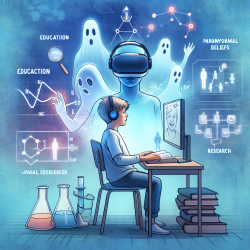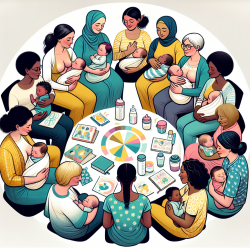Introduction
The COVID-19 pandemic has brought unprecedented challenges to mental health worldwide, particularly affecting children who are already vulnerable to stress and trauma. The research article "REACH for Mental Health in the COVID-19 Pandemic: An Urgent Call for Public Health Action" by Denckla et al. (2020) emphasizes the necessity of integrating mental health interventions into public health strategies. This blog aims to guide practitioners in leveraging the REACH model to enhance their skills and improve outcomes for children.
Understanding the REACH Model
The REACH model is a public mental health intervention developed to address the psychological impacts of the COVID-19 pandemic. It is inspired by the World Health Organization's "Do the Five" concept and is designed to mitigate the effects of traumatic stress through five key actions:
- Recognize the Problem: Acknowledge the pandemic's characteristics as a traumatic event and its widespread impact on mental health.
- Expand the Social Safety Net: Provide support to buffer individuals from the economic and social consequences of the pandemic.
- Assist Those Most At Risk: Target interventions to vulnerable groups, including children with special needs and those with pre-existing mental health conditions.
- Cultivate Resilience: Disseminate evidence-based strategies to enhance resilience and manage stress.
- Have Empathy: Promote self-compassion and kindness to reduce stress and foster community support.
Implementing the REACH Model in Practice
For practitioners working with children, the REACH model offers a structured approach to support mental health during the pandemic. Here are practical steps to implement each component:
- Recognize the Problem: Educate yourself and your team about the signs of trauma and stress in children. Use data to identify patterns and tailor interventions accordingly.
- Expand the Social Safety Net: Collaborate with schools and community organizations to provide resources and support to families in need. This could include access to online therapy services, like those offered by TinyEYE, to ensure continuity of care.
- Assist Those Most At Risk: Develop targeted programs for children with special needs or those experiencing heightened anxiety or depression. Use data-driven assessments to identify at-risk individuals and customize interventions.
- Cultivate Resilience: Integrate resilience-building activities into therapy sessions. Techniques such as mindfulness, diaphragmatic breathing, and progressive muscle relaxation can be powerful tools for children.
- Have Empathy: Foster a supportive environment where children feel heard and understood. Encourage empathy and kindness in interactions, promoting a sense of belonging and community.
Encouraging Further Research
While the REACH model provides a robust framework, ongoing research is crucial to refine and adapt interventions to the evolving needs of children. Practitioners are encouraged to engage in research initiatives, share findings, and collaborate with peers to advance the field of children's mental health.
Conclusion
The REACH model offers a comprehensive approach to addressing the mental health challenges posed by the COVID-19 pandemic. By implementing its principles, practitioners can enhance their skills and create positive outcomes for children. To delve deeper into the research behind the REACH model, read the original research paper.










